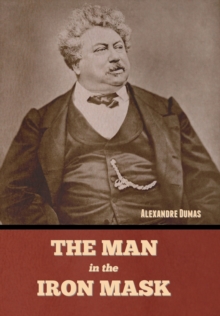The Man in the Iron Mask (French L'Homme au Masque de Fer; died 19 November 1703) was an unidentified prisoner of state, arrested in July 1669 under the pseudonym of "Eustache Dauger" and incarcerated for a period of 34 years during the reign of King Louis XIV of France (1643-1715). Known for remaining unidentified throughout his time in prison, he was held in the custody of the same jailer, Benigne Dauvergne de Saint-Mars, in four successive French prisons, including the Bastille. When he died there on 19 November 1703, his inhumation certificate bore the pseudonym of "Marchialy".
The true identity of this prisoner remains a mystery, even though it has been extensively debated by historians, and various theories have been expounded in numerous books, articles, plays, and films. Among the leading theories is one proposed by the French philosopher and writer Voltaire, who claimed in the second edition of his Questions sur l'Encyclopedie (1771) that the prisoner was an older, illegitimate brother of Louis XIV. This assertion of a royal connection was echoed later by authors who proposed variants of this aristocratic solution.
What little is known about the prisoner is based on contemporary documents that surfaced during the 19th century, mainly some of the correspondence between Saint-Mars and his superiors, in which the prisoner had been labelled "only a valet" shortly after his arrest. Legend has it that no one is known to have seen his face, as it was hidden by a mask of black velvet cloth, later misreported by Voltaire as an iron mask. Official documents reveal, however, that the prisoner was made to cover his face only when travelling from one prison to the next, or in the final years of his incarceration; modern historians believe the latter measure was imposed by Saint-Mars solely to increase his own prestige at the end of his career, thus causing persistent rumours to circulate about this seemingly important prisoner.
In 1932, French historian Maurice Duvivier proposed that the prisoner was Eustache Dauger de Cavoye, a nobleman associated with several political scandals of the late 17th century. This solution, however, was disproved in 1953 based on previously unpublished family letters located by another French historian, Georges Mongredien, who concluded that the enigma remained unsolved owing to the lack of reliable historical documents about the prisoner's identity and the cause of his long incarceration.
The Man in the Iron Mask has been the subject of many works of fiction, most prominently in the late 1840s by Alexandre Dumas. A section of his novel The Vicomte of Bragelonne: Ten Years Later, the final installment of his D'Artagnan saga, features the Man in the Iron Mask. In it, the prisoner is forced to wear an iron mask, and is portrayed as Louis XIV's identical twin. Dumas also presented a review of the popular theories about the prisoner extant in his time in the chapter "L'homme au masque de fer", published in the eighth volume of his non-fiction Crimes Celebres. This panoramic approach was adopted by many subsequent authors, and speculative works have continued to appear on the subject. (wikipedia.org)

